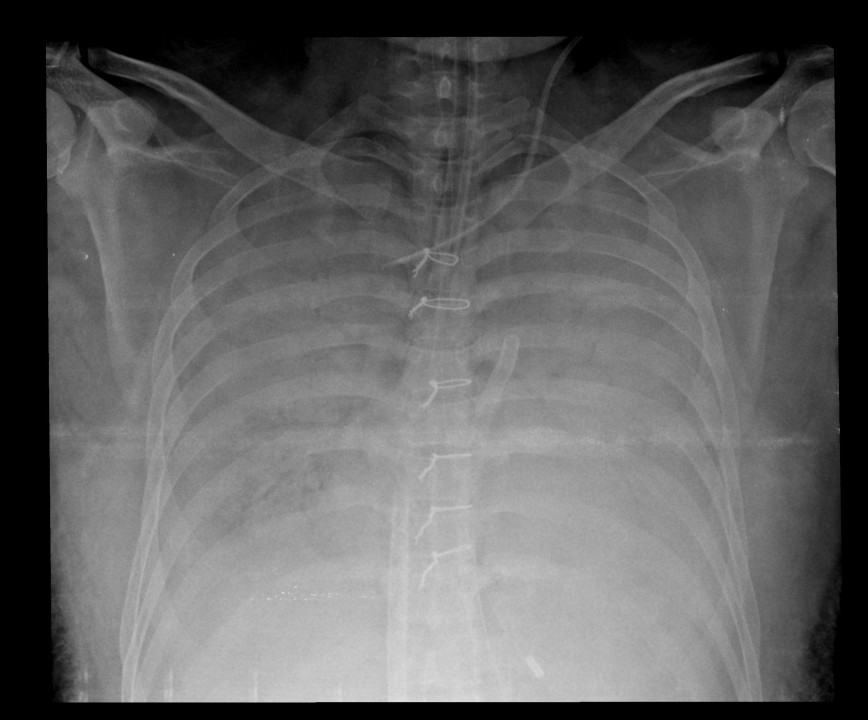
Harlequin syndrome – a clinical experience in VA ECMO

INDRODUCTION
Harlequin syndrome (North south syndrome) is a rare complication of peripheral VA-ECMO. However, it can be as high as 8.8%. the saturation of the upper portion of the body is lower than of the lower half. This is due to high cardiac output from the native heart (forward flow) which prevents the retrograde flow of the ECMO to come and perfuse the upper part. Hence in this condition upper half of the body receives blood from native circulation which is less oxygenated because of compromised lung and rest setting of the ventilator.
CASE REPORT:
A 35 years old male admitted with complaints of breathing difficulties and fever for one week, He is a known case of bronchial asthma and on steroid medication a diagnosis of acute exacerbation of bronchial asthma with type 1 respiratory failure and viral pneumonitis different modes of conventional mechanical ventilation, medications, steroids, inhaled nitric oxide was not available, ABG showed severe respiratory acidosis. CT chest done showed bilateral diffuse patches of lung fields with consolidation features as all measures failed and oxygen index remained low, ECMO was planned for the patient. VA ecmo installed instead of VV Ecmo since the right jugular venous cannulation attempted was unsuccessful due to fragile tissues .so VA ECMO initiated with access cannula of 25 FR Bm femoral venous and 21 FR Bm femoral arterial cannula for inflow. the day 1 gone smoothly with adequate emptied heart and support of full flow to the patient (4.5 LPM of flow, BP 90/50, HR 116, CVP 9, Hb 10.4) gradually patient start to the differential oxygenation saturation between the upper and lower body saturation was < 80% in right radial and 100% in left radial with the support of 100% of fio2 and 3L of sweep gas
To solve the problem, peripheral VA ECMO converted to VAV with divided arterial limb in to PA also, PA is cannulated with 20 FR EOPA cannula and started the ecmo, north south syndrome can be solved with converting to central VA ECMO also, but we cannot predict the recovery of a poorly functioned lungs. tunneled PA arterial cannula stared to show the magic within seconds by improved radial saturation.
MANAGEMENT

Extracorporeal membrane oxygenation (ECMO) via percutaneous femoral vein or jugular vein can provide hypoxic blood to the brain, coronaries, and upper extremities. Tight monitoring of all parameters, especially heamodynamic and blood gases, is necessary to address the patient's issues. This monitoring can be made possible by the use of NIRS monitors, dual atrial lines (femoral and right radial line), separate saturation monitoring for lower and upper limbs, and atrial blood gases. Use of near-infrared spectroscopy (NIRS) detects regional ischemia and warns of impending hypoxic damage. This allows for potential correction of the underlying process, thus preventing permanent ischemic damage. By using a gated clamp and flow monitoring of the arterial limbs of the ecmo, we may modulate the flows in accordance with demands by taking into account the native contractility of the heart, measuring oxygenating in the proximal aortic arch, and detecting differential oxygenation.
DISSCUSION:
VAV Configuration made a split in the arterial limb of ecmo the portion of this oxygenated perfusate is delivered to the Pulmonary circulation, mimicking VV-ECLS. This allows for oxygen enrichment of mixed venous blood with improvement in oxygen delivery to the coronary and cerebral circulations. Distribution of V-AV flow is determined by assessment of oxygenation and hemodynamic support. extracorporeal perforate would take the path of least-resistance, flowing to pulmonary bed, and robbing arterial circulation of blood flow intended for hemodynamic support, it occur only if aortic antegrade flow exceeded extracorporeal flows so gradually we can come down the systemic support once the native cardiac function satisfactory
CONCLUSION:
Harlequin syndrome is a known complication of peripheral VA-ECMO, where the upper part of the body is poorly oxygenated. It occurs when the native heart function is good and lungs are poorly functioning.so care has taken to identifies on proper time with help of proper monitoring, Therapeutic options include converting to central VA-ECMO or VA-V-ECMO.
Senior Perfusionist at Narayana Health
1yGood inference and nicely penned thomson.. well done 👍
Product Specialist - Cardiac Assist, Cardiopulmonary & Advanced Hemodynamic Monitoring, India, Getinge
1yHow was the PA cannulation done?
Perfusion student | Seeking training opportunities
1yReally useful